Themed collection Food Structures, Digestion and Health International Conference

Challenges in computational modelling of food breakdown and flavour release
A dynamic, three dimensional (3D) computational model that predicts the breakdown of food and the release of tastants and aromas could enhance the understanding of how food is perceived during consumption.

Food Funct., 2014,5, 2792-2805
https://doi.org/10.1039/C4FO00786G
Digestive diversity and kinetic intrigue among heated and unheated β-lactoglobulin species
We investigated the relationship between structure and in vitro peptic digestibility of heated and unheated β-lactoglobulin. Surprisingly, the native protein was digested in two distinct phases, which we hypothesise is due to the binding of an inhibitory peptide to the active site of pepsin, followed by a pH-gated transition that releases the inhibitory peptide.
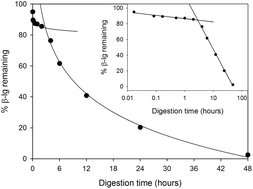
Food Funct., 2014,5, 2783-2791
https://doi.org/10.1039/C4FO00362D
Influence of hydration and starch digestion on the transient rheology of an aqueous suspension of comminuted potato snack food
Hydration kinetics controls ‘bolus’ rheology and starch digestion of comminuted snack foods; in vitro rheology provides new insights into oral processing and food design.
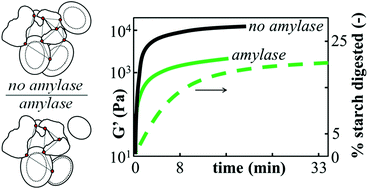
Food Funct., 2014,5, 2775-2782
https://doi.org/10.1039/C4FO00573B
Influence of heat and shear induced protein aggregation on the in vitro digestion rate of whey proteins
Protein intake is essential for growth and repair of body cells, the normal functioning of muscles, and health related immune functions.
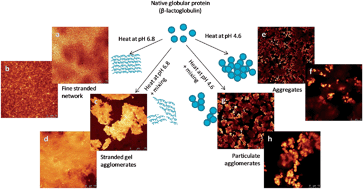
Food Funct., 2014,5, 2686-2698
https://doi.org/10.1039/C4FO00454J
An in vitro rat model of colonic motility to determine the effect of β-casomorphin-5 on propagating contractions
Measurement of contractions that propagate along the length of the isolated large intestine as an in vitro model for effects of food substances on gastro-intestinal transit.
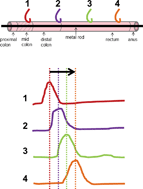
Food Funct., 2014,5, 2768-2774
https://doi.org/10.1039/C4FO00193A
The in vitro digestibility of beef varies with its inherent ultimate pH
Animal carcasses and cuts of meat are usually differentiated and valued according to size and compositional attributes. An indicator of meat quality that is invisible to consumers is the inherent ultimate pH (pHu), which affects organoleptic and processing characteristics.
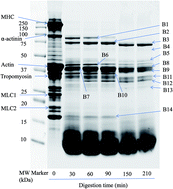
Food Funct., 2014,5, 2759-2767
https://doi.org/10.1039/C4FO00502C
A novel method for classifying starch digestion by modelling the amylolysis of plant foods using first-order enzyme kinetic principles
LOS plots of first-order digestibility data enable the rapid identification of nutritionally-important starch fractions, and allow the final extent (C∞) of starch amylolysis to be accurately predicted.
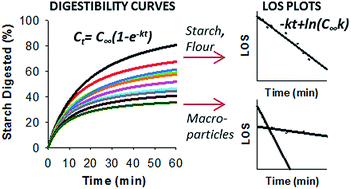
Food Funct., 2014,5, 2751-2758
https://doi.org/10.1039/C4FO00115J
Complex coacervation with whey protein isolate and gum arabic for the microencapsulation of omega-3 rich tuna oil
Tuna oil rich in omega-3 fatty acids was microencapsulated in whey protein isolate (WPI)–gum arabic (GA) complex coacervates, and subsequently dried using spray and freeze drying to produce solid microcapsules.
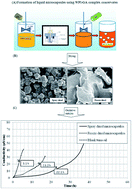
Food Funct., 2014,5, 2743-2750
https://doi.org/10.1039/C4FO00296B
Propagating longitudinal contractions in the ileum of the rabbit – Efficiency of advective mixing
The flow and mixing of viscous fluids in the small intestine for various types of longitudinal motility.
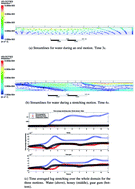
Food Funct., 2014,5, 2731-2742
https://doi.org/10.1039/C4FO00487F
Transport of hop aroma compounds across Caco-2 monolayers
Hop aroma compounds and digestive transformation products thereof were investigated in view of their human intestinal absorption and biotransformation processes.

Food Funct., 2014,5, 2719-2730
https://doi.org/10.1039/C3FO60675A
In vitro transport and satiety of a beta-lactoglobulin dipeptide and beta-casomorphin-7 and its metabolites
In vitro transport of β-CM7 occurs through rapid hydrolysis into three peptide metabolites that transport at variable rates.
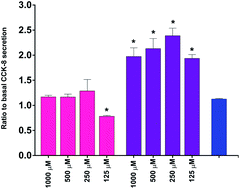
Food Funct., 2014,5, 2706-2718
https://doi.org/10.1039/C4FO00164H
Digestion proteomics: tracking lactoferrin truncation and peptide release during simulated gastric digestion
Peptide release profiles from lactoferrin were tracked and characterised during simulated gastric digestion using a novel quantitative proteomic approach.
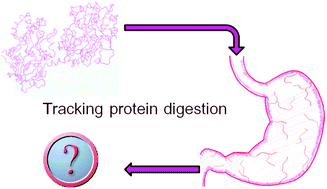
Food Funct., 2014,5, 2699-2705
https://doi.org/10.1039/C4FO00165F
About this collection
This collection contains selected articles from the 2nd International Conference on Food Structures, Digestion and Health which was held in Melbourne on 21–24 October 2013, hosted by CSIRO and Guest Edited by Professors Mike Gidley and Li Day.
This conference was the 2nd in a series that is intended to be hosted in turn by New Zealand and Australia. The conference focused on multi-disciplinary interaction and presented a unique opportunity to bring together food industry professionals and world leading scientists from diverse disciplines including food science, nutrition, digestive behaviour, genetics, medical science and engineering with a common interest in food design to deliver better nutrition and improve consumer wellbeing. The conference was supported by the International Knowledge Based Bio-Economy (KBBE) Forum, which was formed in 2010 to build linkages between the European Union , Australia, Canada and New Zealand in the areas of food and agriculture.
A significant challenge in the food structure area is one of structure-function definition. Current regulatory and labelling regimes rely on analytical measurements, usually of chemical structure, which cannot always be related to nutritional value where food structure effects are involved. A major opportunity for the food structures community is therefore to develop the methodologies that will allow more predictive behaviour of foods during and following digestion in individuals and populations that can be linked with probabilities of nutritional (e.g. biomarker) and consequent health outcomes in individuals and populations.
Thus the aims of this conference were to address the key scientific areas such as food reformulation for appetite control and weight management, nutritional metabolomics and in vitro measurements, food structure and matrix effects on nutrient uptake and bioavailability, modelling the function of the human gastrointestinal tract, and modification of food structures to enhance sensory perception to allow greater salt, sugar and fat reduction in foods.
The conference enabled dynamic exchange of information, access to the latest research findings and new technologies, and stimulated scientific debate and discussion between the participants across different disciplines. The next in this series of conference (www.fsdh2015.org) will be held in Wellington, New Zealand in October 2015, hosted by Massey University.